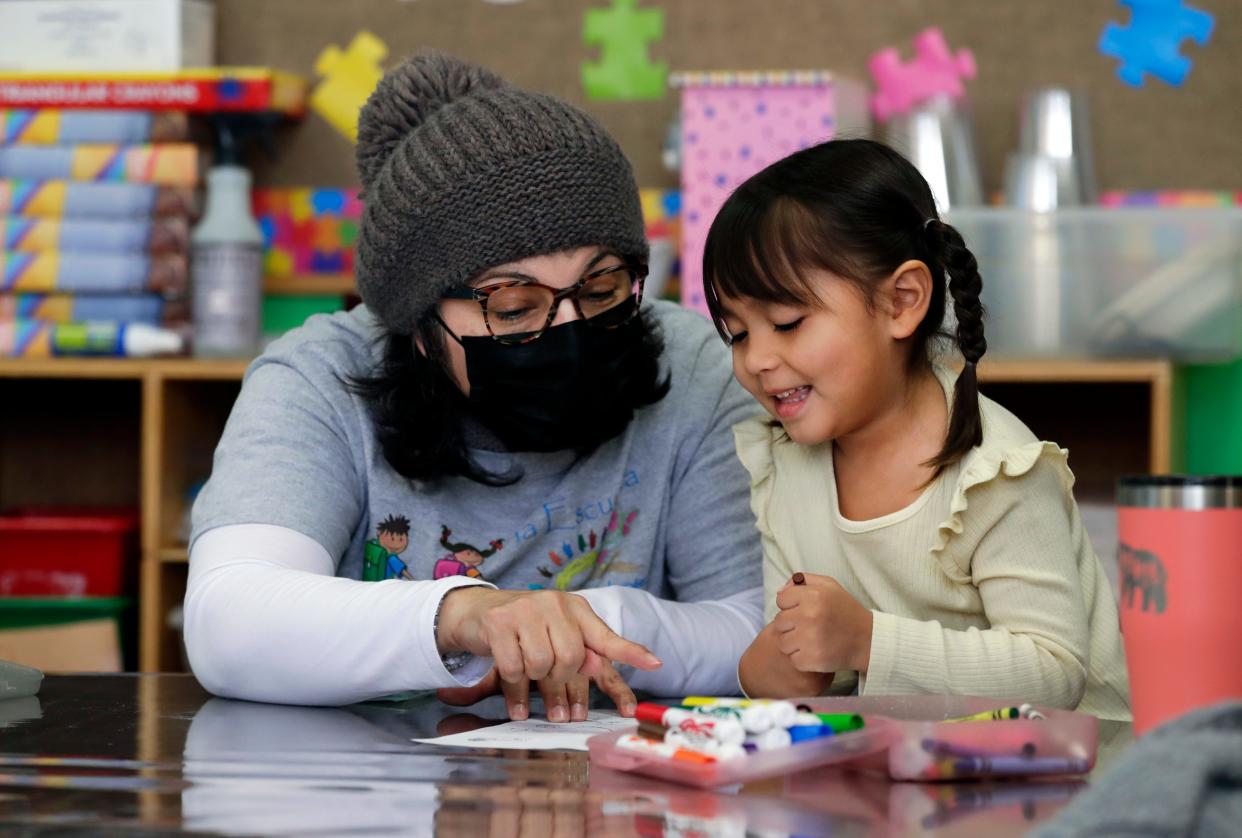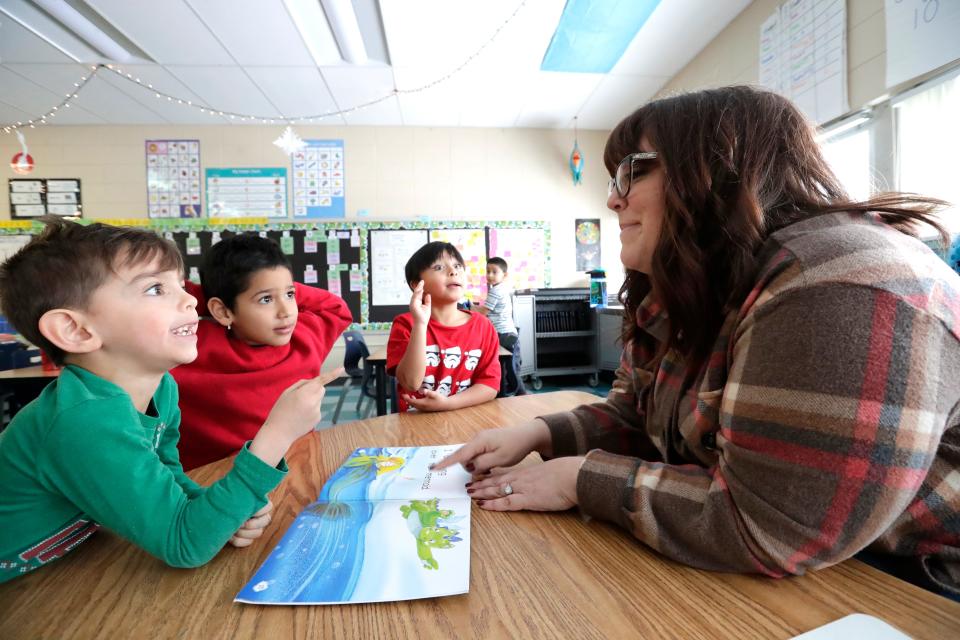What is phonics? Here's a guide to reading terms parents should know

Editor's note: With low reading proficiency scores across the state, USA TODAY NETWORK-Wisconsin is exploring the causes and consequences of low literacy. This article is part of the By the Book series, which examines reading curriculum, instructional methods and solutions in K-12 education to answer the questions: Why do so many Wisconsin kids struggle to read, and what can be done about it? To read other stories in the series, click here.
Education is full of buzzwords and jargon that can be hard to decipher if you aren't a teacher, especially when it comes to reading.
As Wisconsin works to change the way kids are taught to read, parents will likely run into terms they're unfamiliar with. The USA TODAY NETWORK-Wisconsin created a glossary to help parents and families navigate the world of reading instruction.
What is literacy?
Literacy is the ability for someone to understand spoken and written language along with being able to write.
What is the science of reading?
This term has risen to national prominence as the need for reforming reading instruction has taken center stage in education. The term refers to a decades-old body of research that explains how the brain learns to read.
What is the science of reading movement?
In short, this is the effort to connect science of reading research to educational practices in classrooms. There are varying opinions on how that can be achieved and what curriculums and trainings do it well. Many science of reading movement supporters call for more explicit instruction on foundational reading skills like phonics and ditching an instructional method called "three-cueing."
What are the components of reading?
In 2000, a national panel on reading convened by the U.S. Department of Education and National Institute of Child Health and Human Development issued a report outlining the research on how kids learn to read. That report outlined five key components of reading instruction:
Comprehension: In reading, the ability of a person to understand meaning from text, both what is explicitly expressed as well as what is implied.
Fluency: The ability to read text accurately, with speed and comprehension.
Phonemic awareness: The ability to identify and understand the individual sounds in spoken words. For example, the ability for someone to see that the word "rat" is a combination of the sounds each of the letters "r," "a" and "t."
Phonics: Reading instruction that teaches students the sounds letters make and how those sounds combine in predictable patterns to form words. For example, phonics teaches students that when an "e" is at the end of a word, it's usually silent. That "e" then changes the sound of the vowels in the word. Take the word "lake." The "e" is silent, and it makes the "a" have a long sound, sounding like name of the letter.
Vocabulary: In reading, the words someone knows and understands the meaning of.

What is three-cueing or MSV?
Three-cueing, also known as MSV (meaning, sentence structure and visual cues), is an instructional technique that places an emphasis on students using the meaning of the sentence, sentence structure and visual cues (the letters themselves) to decipher meaning from text instead of sounding out a word.
For example, when a reader doesn't know a word, the technique might have the reader ask themselves, "What word makes sense in the sentence?"
Research shows that this technique is used by poor readers, and that strong readers opt for sounding out words they don't know.
What is decoding?
Decoding is the ability for someone to sound out the letters in a word to figure out what the word is. For example, if a student doesn't know the word "stump," they can sound out the letter combinations (st/u/m/p) to understand the word. Phonics instruction helps readers learn to decode because they learn the different sound combinations letters make.
What is balanced literacy?
Balanced literacy has different meanings depending on the educator or organization. Typically, it's an instructional framework that combines teaching students to identify words through meaning and context with some phonics.
Balanced literacy is often seen as controversial because it incorporates instructional methods, like three-cueing, that research has found promotes poor reading skills. Depending on the curriculum, it also places a larger focus on developing a love for reading and independent learning with less explicit instruction, which doesn't work for many readers.
What is structured literacy?
Structured literacy is often seen as the opposite of balanced literacy. It's an instructional framework for reading that uses explicit, teacher-driven instruction on foundational reading skills like vocabulary and phonics. There is a larger emphasis on phonics in this approach than there is in balanced literacy. It doesn't include the three-cueing method and promotes students "decoding," or sounding out, words they don't know. This is the framework supported by the science of reading movement.
What are the reading wars?
This is the term used to capture the centuries-old division in education on which method is best for teaching reading: an approach that focuses heavily on the sounds letters make and how they combine to make words (phonics) or one that teaches kids to identify whole words through meaning. While the approaches have gone through a series of name changes, the debate about how to teach reading dates back to the 1800s.
What is reading proficiency?
Proficiency standards and levels are set differently depending on the test or organization. In Wisconsin, someone is proficient in a subject when they demonstrate an understanding of concepts they are expected to know at that grade level. It's used to determine whether a student is meeting grade-level expectations.
What is dyslexia?
Dyslexia is a language-based learning disability that affects reading. Those with dyslexia struggle with matching letters on a page with the sound combinations those letters make.
More: One in 5 could have dyslexia, but Wisconsin students, parents feel school support falls short
What is Act 20?
Act 20 is the first major literacy law passed in the state of Wisconsin. It bans teaching three-cueing and incentivizes schools that purchase curriculums after January 2024 to use those approved by the state Department of Public Instruction. The law also requires more screenings to identify students who aren't meeting grade-level expectations and new professional development for teachers, among other things.
It was authored and supported by Republicans in the state Legislature, with Democrats largely voting against the bill. It became law in July 2023.
What are the Forward Exams?
The Forward Exams are statewide standardized tests administered annually by the state of Wisconsin that all public school students in grades three through eight take. Students are tested in math and reading.
In grades four and eight, students are also tested in science and social studies. High school sophomores are tested in social studies but no other subject.
The scores on these exams measure a student's proficiency in various subjects and whether they're meeting state academic standards. The tests are a snapshot of whether students are on track with their learning.
For definitions of more reading terms, visit www.readingrockets.org/teaching/glossary or the National Center on Improving Literacy at https://improvingliteracy.org/glossary.
Danielle DuClos is a Report for America corps member who covers K-12 education for the Green Bay Press-Gazette. Contact her at dduclos@gannett.com. Follow on Twitter @danielle_duclos. You can directly support her work with a tax-deductible donation at GreenBayPressGazette.com/RFA or by check made out to The GroundTruth Project with subject line Report for America Green Bay Press Gazette Campaign. Address: The GroundTruth Project, Lockbox Services, 9450 SW Gemini Drive, PMB 46837, Beaverton, Oregon 97008-7105
This article originally appeared on Green Bay Press-Gazette: What is phonics? Here's a guide to reading terms parents should know

